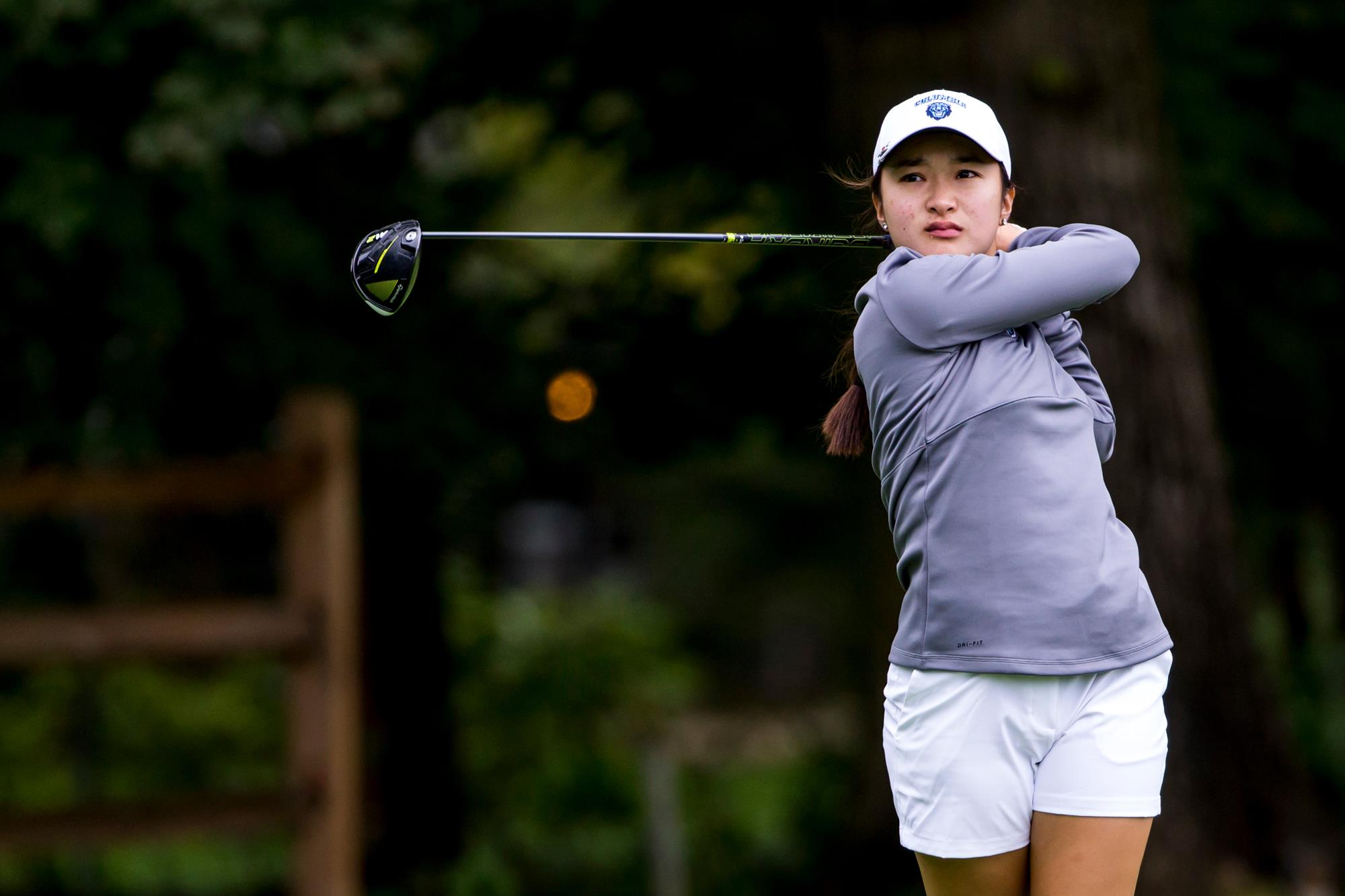
By Jennifer Wang |
Since the summer of 2009, you’d be able to spot a little girl on the golf range located in Solon, Ohio. Male golfers of all ages would drive past as they made the 9-hole turn and point out the lone girl practicing on the range. That eight-year-old girl was me. I remember always hearing whispers. A girl playing golf was — and still is — a rare sight.
Golf has always been known as a “gentleman’s sport,” reflecting the sport’s male dominance since its first founding. Golf was played as a luxury sport — predominantly available only to rich, white men — because of the expensive equipment required and the exclusivity of country clubs. Unfortunately, golf is still treated like it was in the 1900s, despite it being the 21st century. Specifically, golf has made little progress when it comes to bringing women to an equal footing with men. In order to solve this problem, we must first understand the factors which continue to perpetuate gender inequality in golf. These factors, including a lack of media coverage and exclusivity, create the self-fulfilling cycle of female golfers being less paid, less appreciated, and less exposed.
Media and commercial influence have a significant impact on making players wellknown nowadays. Not many non-golfers know of any famous female golfers, but they do know who Tiger Woods and Arnold Palmer are. Commercialized products such as the half-lemonade, half-iced tea drink named “Arnold Palmer” or the popular TW-logoed Nike products contribute greatly to the exposure of these male golf legends. There are definitely less endorsements of female golfers relative to male golfers in big brands such as Rolex and Nike. Brands advertise male golfers because male golfers are more famous and idolized by fans, who in turn want to buy products that their favorite golfers use.
Television is also a huge source of exposure, but unfortunately, there is a lack of coverage of female golf. According to a journal article by Mass Communication & Society, men’s golf “can often be found on network television or ESPN for as many as 40 hours per weekend, whereas women’s golf typically gets only 4 hours per weekend on a secondary cable network.” This marks a difference of approximately 36 hours! Furthermore, while women’s golf only has one professional tournament series, men’s golf has three circuits of differing levels. Women don’t even have as many opportunities to showcase their talents.
It’s also clear that the men on the PGA Tour play for bigger purses than do the women on the LPGA. In “Gender, Skill, and Earnings in Professional Golf,” Stephen Shmanske demonstrates that women actually get paid more in their own field than if they were to be put in an even playing field as men: “Annika Sorenstam was the leading money winner in the LPGA, averaging $52,036 in earnings per tournament. When Sorenstam’s statistics are evaluated in the men’s function, the predicted earnings are $27,127.” These values show that Sorenstam earns twice the amount on the LPGA Tour than she would if she were competing on the PGA Tour. Some argue that perfect gender equality means women should be paid less in golf based off raw skill-based competition. However, women shouldn’t be constrained to male standards. Males and females should be separated into different brackets; the top female should be paid equal to the top male.
Tennis is the perfect counterexample to illustrate that the disparity between genders doesn’t have to be that large. Both golf and tennis developed as upper class activities, but women’s tennis today enjoys a much smaller pay gap than women’s golf. In fact, for tennis Grand Slam tournaments, male and female tennis players earn the same prize money. However, there’s a remarkable difference in payoffs between men’s and women’s golf majors.
For golf to make progress, changes must be made. Advancements in instating and covering female events need to increase. In 2019, there was a big breakthrough for the female golf community. Augusta National Golf Club, a renowned venue, is hosting its first ever women’s event in 2019. This iconic club used to be an exclusively male club up until 2012, hosting the Masters Tournament (one of the four men’s majors) since 1934. LPGA and female amateur players need to promote programs such as the Junior PGA or the First Tee — both of which I participated in as a little girl — to increase golf exposure to young girls. Also, access to resources like country clubs must be open to both men and women.
Golf is a lifetime sport that should be equally accessible to all individuals. We need to decrease the gender disparity within golf so women can dream bigger.
Jennifer Wang, 18, from Solon, Ohio, is a student athlete at Columbia University in New York, playing for the women’s golf team and planning on studying neuroscience on the pre-med track. She picked up her first golf club as a five-year-old and has played competitively since she was eight years old with the local Junior PGA Pups Tour and US Kids Golf Tour. She has competed at the highest level in the AJGA circuit, including qualifying and competing in the 2017 US Girls’ Junior Championship, 2017 AJGA Rolex Tournament of Champions, and the 2017 Girls Junior PGA Championship (making the cut and placing top 40 in a field of 144). She was runner-up at the 2018 Ivy League Championship earning First-Team All-Ivy League Honors.